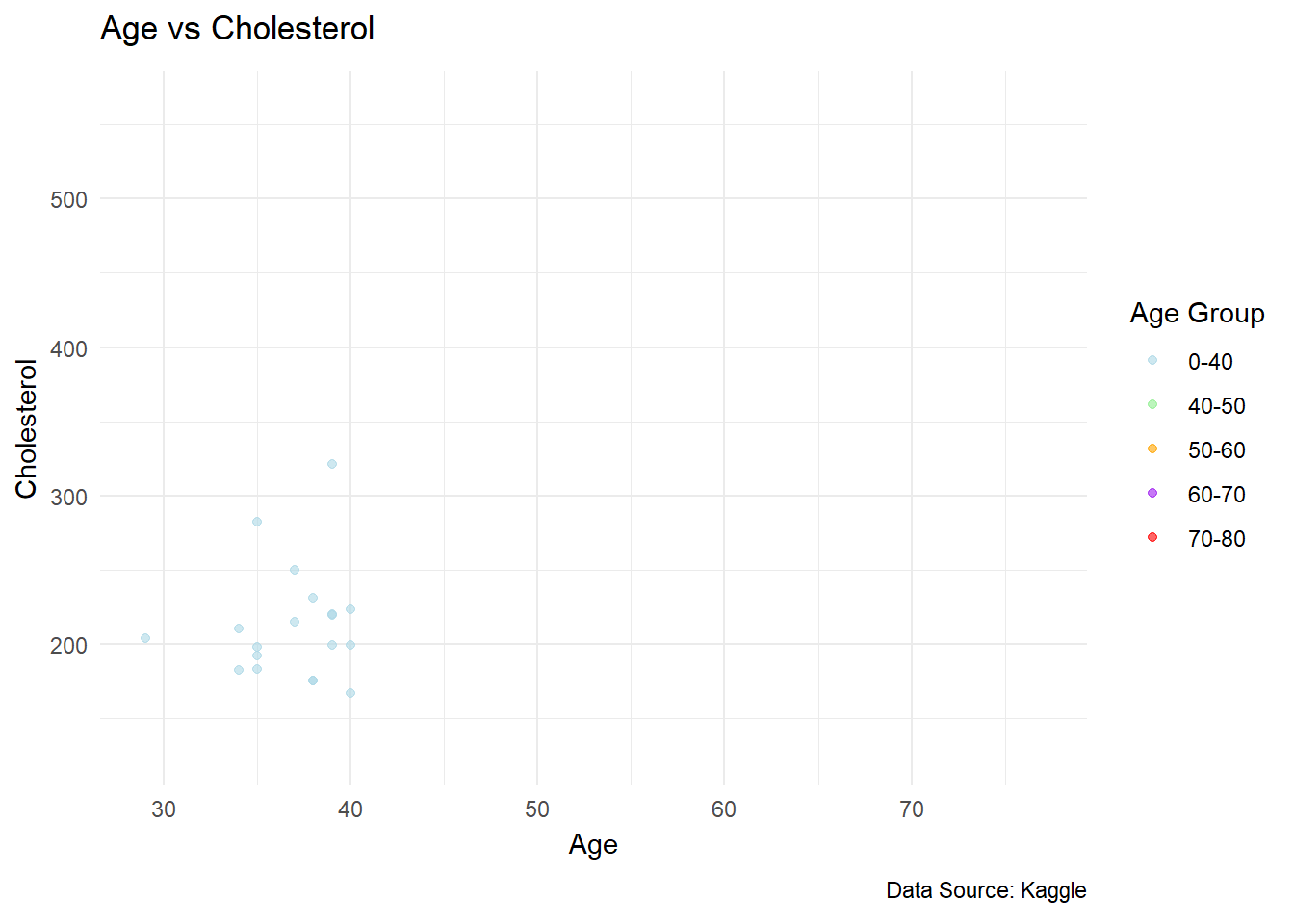
ANALYSIS
| This page further highlights key patterns in cholesterol levels and chest pain type, which is important for understanding heart health. |
This scatter plot examines the relationship between age and cholesterol levels.
- Cholesterol levels increase with age.
- Important for assessing heart disease risk.
This plot shows how maximum heart rate achieved varies by chest pain type.

- Different chest pain types show distinct heart rate patterns.
- “Typical Angina” shows a narrow distribution; other types have broader distributions.
This pie chart displays the distribution of different chest pain types, highlighting each proportion.

The graph shows the distribution of these four different chest pain types among patients:
Typical Angina: Pain associated with coronary artery disease, often during exertion.
Atypical Angina: Unusual pain that may still be linked to coronary artery disease.
Non-Anginal Pain: Pain unrelated to coronary artery disease, possibly from other causes.
Asymptomatic: No chest pain experienced, indicating possible lack of symptoms or different issues.
This chart provides insight into the different types of chest pain associated with heart attacks.
Learn more about types of Angina at Cleveland Clinic
To answer our question…
The key predictors of heart attacks in order of significance are…
| - Age: Generally the most significant predictor, as the risk of heart attack increases with age. |
| - Cholesterol Levels: High cholesterol is a major risk factor for heart disease. |
| - Chest Pain Type: Different types of chest pain are associated with varying levels of heart attack risk. |
| - Maximum Heart Rate: Low maximum heart rate can indicate higher risk, but it’s less direct compared to age and cholesterol. |
| - Gender: Provides context but is less direct in predicting heart attack risk compared to the other factors. |
Recognizing these patterns helps identify high-risk individuals and guide prevention efforts.
Next Steps
- Patients: Monitor risk factors and adhere to prevention strategies.
- Doctors: Tailor screenings and treatments based on key predictors.
- Public: Promote awareness and healthy lifestyle changes.